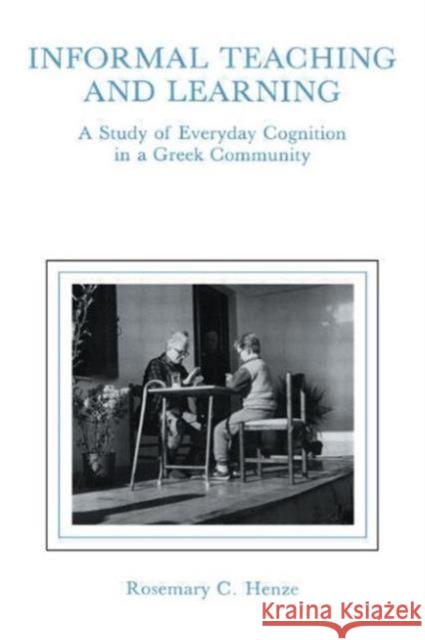informal Teaching and Learning : A Study of Everyday Cognition in A Greek Community » książka
informal Teaching and Learning : A Study of Everyday Cognition in A Greek Community
ISBN-13: 9780805809886 / Angielski / Twarda / 1992 / 208 str.
informal Teaching and Learning : A Study of Everyday Cognition in A Greek Community
ISBN-13: 9780805809886 / Angielski / Twarda / 1992 / 208 str.
(netto: 670,84 VAT: 5%)
Najniższa cena z 30 dni: 654,86
ok. 22 dni roboczych
Dostawa w 2026 r.
Darmowa dostawa!
Based on an ethnographic study conducted in a Greek community, this book celebrates the small ways people teach and learn while they are engaged in other, supposedly more important, activities. By examining the intricate ways in which knowledge and skills of everyday life are transmitted, it shows how family, community, and culture shape the cognitive world of learners. Beginning with a rich description of the community and its culture, the book then focuses on six contrasting episodes of informal instruction. Video and audiotaped scenes of learning to dance, learning to perform the healing art of cupping, and learning about kinship, for example, provide material for detailed analyses. The book demonstrates the interplay of culture and learning by exploring how the cultural theme of struggle and the use of different interpretive frames shaped informal instruction in this community and how, at the same time, processes of informal teaching and learning contributed to the evolving construction of culture by its members. Interpretive framing emerges as a key concept that studies of situated cognition must consider.Since formal and informal instruction are closely linked, the culturally specific ways of teaching and learning shown in informal instruction will help all educators meet the needs of diverse student bodies.
Based on an ethnographic study conducted in a Greek community, this book celebrates the small ways people teach and learn while they are engaged in other, supposedly more important, activities. By examining the intricate ways in which knowledge and skills of everyday life are transmitted, it shows how family, community, and culture shape the cognitive world of learners. Beginning with a rich description of the community and its culture, the book then focuses on six contrasting episodes of informal instruction. Video and audiotaped scenes of learning to dance, learning to perform the healing art of cupping, and learning about kinship, for example, provide material for detailed analyses. The book demonstrates the interplay of culture and learning by exploring how the cultural theme of struggle and the use of different interpretive frames shaped informal instruction in this community and how, at the same time, processes of informal teaching and learning contributed to the evolving construction of culture by its members. Interpretive framing emerges as a key concept that studies of situated cognition must consider. Since formal and informal instruction are closely linked, the culturally specific ways of teaching and learning shown in informal instruction will help all educators meet the needs of diverse student bodies.











